Social Sustainability and Subjective Well-Being: A Study on Italian Inner Areas
Abstract
1. Introduction
2. Materials and Methods
2.1. Strategy for Inner Areas
2.2. Specificities of the Inner Areas
2.3. Survey
- Overall Well-Being: Subjective well-being (SWBE);
- Individual Well-Being (IWB): Connection to the community (CONN) and quality of life (QLIF);
- Social Relationships: Family and social relationships (RELA), community support (COMS), community organization engagement (ENGA), seeking help/support from the community (ASKH), and public support services (SUPS);
- Economic Opportunities and Facilities (ECC): Remote work (REMW), innovation readiness (CHAL), quality of financial services (FINS), business support services (BUSS), the skilled labor force (SKIL), and sustainable local production (SUST);
- Digitalization (DIG): Digital research adequacy (TECH) and digital services (BROB);
- Transportation (TRAN).
2.4. Methodology for Modeling Ordinal Data
3. Results
3.1. Well-Being Perception
3.2. Models for Macro-Dimensions
4. Conclusions
Author Contributions
Funding
Institutional Review Board Statement
Informed Consent Statement
Data Availability Statement
Acknowledgments
Conflicts of Interest
Appendix A. Macro-Dimensions
- How strong is the level of your overall subjective well-being (SWBE)?
- How deeply do you feel a connection to the community where you reside (CONN)?
- How important do you consider residing in a small community to be for quality of life (QLIF)?
- How positively would you describe your relationships with members of your family and social circle (RELA)?
- To what extent did your home community support you throughout the COVID-19 pandemic (COMS)?
- How engaged do you consider yourself to be in the community organizations operating in your area (ENGA)?
- Do you easily ask for help/support from members of the community where you live if you are in need (ASKH)?
- How adequate are the support services provided by public institutions in your area of residence (SUPS)?
- How likely do you think the spread of remote work will support the development of the community in which you live (REMW)?
- In your opinion, to what extent is the local business and institutional framework prepared to meet the challenges of digital and technological innovation (CHAL)?
- How adequate do you think the financial services (e.g., access to credit) are in your area (FINS)?
- How adequate do you think the business support services (e.g., business incubators) are in your area (BUSS)?
- How adequate is the availability of skilled labor forces in your area (SKIL)?
- How likely is it that there will be benefits in your area from sustainable/local production that appeals to sensitive consumers (SUST)?
- How adequate do you think advanced digital services (e.g., tech parks and research centers) are in your area (TECH)?
- How adequate do you think digital services (such as broadband) are in your area (BROB)?
- How adequate do you think the transportation facilities and infrastructure (e.g., roads, railways, and airports) are in your area (TRAN)?
References
- Eizenberg, E.; Jabareen, Y. Social sustainability: A new conceptual framework. Sustainability 2017, 9, 68. [Google Scholar] [CrossRef]
- Colantonio, A. Social sustainability: A review and critique of traditional versus emerging themes and assessment methods. In SUE-Mot Conference 2009: Conference Proceedings; Horner, M., Price, A., Bebbington, J., Emmanuel, R., Eds.; Loughborough University: Loughborough, UK, 2009; pp. 865–885. [Google Scholar]
- Vallance, S.; Perkins, H.C.; Dixon, J.E. What is social sustainability? A clarification of concepts. Geoforum 2011, 42, 342–348. [Google Scholar] [CrossRef]
- Dempsey, N.; Bramley, G.; Power, S.; Brown, C. The social dimension of sustainable development: Defining urban social sustainability. Sustain. Develop. 2011, 19, 289–300. [Google Scholar] [CrossRef]
- Andrews, F.M.; Robinson, J.P. Measures of subjective well-being. In Measures of Personality and Social Psychological Attitudes; Robinson, J.P., Shaver, P.R., Wrightsman, L.S., Eds.; Academic Press: San Diego, CA, USA, 1991; pp. 61–114. [Google Scholar]
- Veenhoven, R. Why Social Policy Needs Subjective Indicators. Soc. Ind. Res. 2003, 58, 33–46. [Google Scholar] [CrossRef]
- Casini, L.; Boncinelli, F.; Gerini, F.; Romano, C.; Scozzafava, G.; Contini, C. Evaluating rural viability and well-being: Evidence from marginal areas in Tuscany. J. Rural Stud. 2020, 75, 104–115. [Google Scholar] [CrossRef]
- Zolin, M.B.; Ferretti, P.; Grandi, M. Sustainability in Peripheral and Ultra-Peripheral Rural Areas through a Multi-Attribute Analysis: The Case of the Italian Insular Region. Sustainability 2020, 12, 9380. [Google Scholar] [CrossRef]
- Becchetti, L.; Colcerasa, F.; Peragine, R.; Pisani, F. Inequality of opportunity and life satisfaction. Oxf. Econ. Pap. 2024, 76, 1204–1225. [Google Scholar] [CrossRef]
- Stiglitz, J.E.; Sen, A.; Fitoussi, J. Report of the Commission on the Measurement of Economic Performance et Social Progress. Available online: https://ec.europa.eu/eurostat/documents/8131721/8131772/Stiglitz-Sen-Fitoussi-Commission-report.pdf (accessed on 20 September 2024).
- He, Q.; Tong, H.; Liu, J.B. How does inequality affect the residents’ subjective well-being: Inequality of opportunity and inequality of effort. Front. Psychol. 2022, 13, 843854. [Google Scholar] [CrossRef]
- Brunori, P. The perception of inequality of opportunity in Europe. Rev. Income Wealth 2017, 63, 464–491. [Google Scholar] [CrossRef]
- Barca, F.; Casavola, P.; Lucatelli, S. A Strategy for Inner Areas in Italy: Definition, Objectives, Tools and Governance. Mater. UVAL 2014, 31, 10. Available online: http://politichecoesione.governo.it/media/2299/issue-31_documents_2014_inner-areas_eng.pdf (accessed on 2 November 2024).
- Romano, B.; Zullo, F.; Fiorini, L.; Montaldi, C. Micromunicipality (MM) and Inner Areas in Italy: A Challenge for National Land Policy. Sustainability 2022, 14, 15169. [Google Scholar] [CrossRef]
- Rossitti, M.; Dell’Ovo, M.; Oppio, A.; Torrieri, F. The Italian national strategy for inner areas (SNAI): A critical analysis of the indicator grid. Sustainability 2021, 13, 6927. [Google Scholar] [CrossRef]
- Copus, A.; Mantino, F. Inner Peripheries: An oxymoron or a real challenge for territorial cohesion? Ital. J. Plan. Pract. 2017, 7, 24–49. [Google Scholar]
- Urso, G.; Modica, M.; Faggian, A. Resilience and Sectoral Composition Change of Italian Inner Areas in Response to the Great Recession. Sustainability 2019, 11, 2679. [Google Scholar] [CrossRef]
- Basile, G.; Cavallo, A. Rural Identity, Authenticity, and Sustainability in Italian Inner Areas. Sustainability 2020, 12, 1272. [Google Scholar] [CrossRef]
- Cotella, G.; Brovarone, E. The Italian National Strategy for Inner Areas: A Place-Based Approach to Regional Development. In Dilemmas of Regional and Local Development; Routledge: London, UK, 2020. [Google Scholar] [CrossRef]
- ISTAT. La Demografia Delle Aree Interne: Dinamiche Recenti e Prospettive Future. Available online: https://www.istat.it/wp-content/uploads/2024/07/STATISTICA-FOCUS-DEMOGRAFIA-DELLE-AREE-INTERNE_26_07.pdf (accessed on 22 November 2024).
- Kasper, M.H. The Effects of Incentives, Interview Length, and Interviewer Characteristics on Response Rates in a CATI-Study. Int. J. Public Opin. Res. 2007, 19, 112–121. [Google Scholar]
- Kankaraš, M.; Capecchi, S. Neither agree nor disagree: Use and misuse of the neutral response category in Likert-type scales. METRON 2024. [Google Scholar] [CrossRef]
- Censimenti Permanenti: Datawarehouse. Available online: http://dati-censimentipermanenti.istat.it/?lang=en&SubSessionId=dc9323bd-c425-4f23-9902-074ffcd8059e (accessed on 5 November 2024).
- Ackerman, N.; Paolucci, B. Objective and subjective income adequacy: Their relationship to perceived life quality measures. Soc. Indic. Res. 1983, 12, 25–48. [Google Scholar] [CrossRef]
- Grable, J.E.; Cupples, S.; Fernatt, F.; Anderson, N. Evaluating the link between perceived income adequacy and financial satisfaction: A resource deficit hypothesis approach. Soc. Indic. Res. 2013, 114, 1109–1124. [Google Scholar] [CrossRef]
- Cruces, G.; Perez-Truglia, R.; Tetaz, M. Biased perceptions of income distribution and preferences for redistribution: Evidence from a survey experiment. J. Public Econ. 2013, 98, 100–112. [Google Scholar] [CrossRef]
- Meisters, R.; Putrik, P.; Westra, D.; Bosma, H.; Ruwaard, D.; Jansen, M. Two sides of the same coin? Absolute income and perceived income inadequacy as social determinants of health. Int. J. Equity Health 2023, 22, 128. [Google Scholar] [CrossRef] [PubMed]
- Gifi, A. Nonlinear Multivariate Analysis; Wiley: Chichester, UK, 1990. [Google Scholar]
- Mair, P.; De Leeuw, J. A general framework for multivariate analysis with optimal scaling: The R package aspect. J. Stat. Soft. 2010, 32, 1–23. [Google Scholar] [CrossRef]
- D’Elia, A.; Piccolo, D. A mixture model for preference data analysis. Comp. Stat. Data Anal. 2005, 49, 917–934. [Google Scholar] [CrossRef]
- Piccolo, D. On the moments of a mixture of Uniform and Shifted Binomial random variables. Quad. Stat. 2003, 5, 85–104. [Google Scholar]
- Piccolo, D.; Simone, R. The class of CUB models: Statistical foundations, inferential issues and empirical evidence, (with discussion and rejoinder). Stat. Meth. Appl. 2019, 28, 389–435. [Google Scholar] [CrossRef]
- Simone, R.; Corduas, M.; Piccolo, D. Dynamic modelling of price expectations and judgments. METRON 2023, 81, 323–342. [Google Scholar] [CrossRef]
- Agresti, A. Categorical Data Analysis; John Wiley & Sons: New York, NY, USA, 2012. [Google Scholar]
- Allik, J. The Binomial distribution in psychological measurement. Psych. Meth. 2014, 19, 150–162. [Google Scholar]
- Grilli, L.; Rampichini, C.; Varriale, R. Binomial mixture modelling of university credits. Commun. Stat. Theory Methods 2015, 44, 4866–4879. [Google Scholar] [CrossRef]
- Zhou, Y.; Lange, C. Empirical and statistical reasoning support the use of a shifted Binomial distribution for the feeling component. J. Appl. Stat. 2009, 36, 465–478. [Google Scholar]
- Andrich, D. Likert scaling and the analysis of Likert-type questionnaires. Psychometrika 1978, 43, 553–570. [Google Scholar]
- Capecchi, S.; Simone, R. A proposal for a model-based composite indicator: Experience on perceived discrimination in Europe. Soc. Indic. Res. 2019, 141, 95–110. [Google Scholar] [CrossRef]
- Schwarz, G. Estimating the dimension of a model. Ann. Stat. 1978, 6, 461–464. [Google Scholar] [CrossRef]
- Easterlin, R.A.; McVey, L.A.; Switek, M.; Sawangfa, O.; Zweig, J.S. The happiness-income paradox revisited. Proc. Natl. Acad. Sci. USA 2010, 107, 22463–22468. [Google Scholar] [CrossRef]
- Mikucka, M.; Sarracino, F.; Dubrow, J.K. When does economic growth improve life satisfaction? Multilevel analysis of the roles of social trust and income inequality in 46 countries, 1981–2012. World Dev. 2017, 93, 447–459. [Google Scholar] [CrossRef]
- Vezzoli, M.; Valtorta, R.R.; Mari, S.; Durante, F.; Volpato, C. Effects of objective and subjective indicators of economic inequality on subjective well-being: Underlying mechanisms. J. Appl. Soc. Psych. 2023, 53, 85–100. [Google Scholar] [CrossRef]
- Brenner, B.; Hartl, B. The perceived relationship between digitalization and ecological, economic, and social sustainability. J. Clean. Prod. 2021, 315, 128128. [Google Scholar] [CrossRef]
- Bock, B. Rural marginalisation and the role of social innovation; a turn towards endogenous development and rural reconnection. Sociol. Rural. 2016, 56, 552–573. [Google Scholar] [CrossRef]

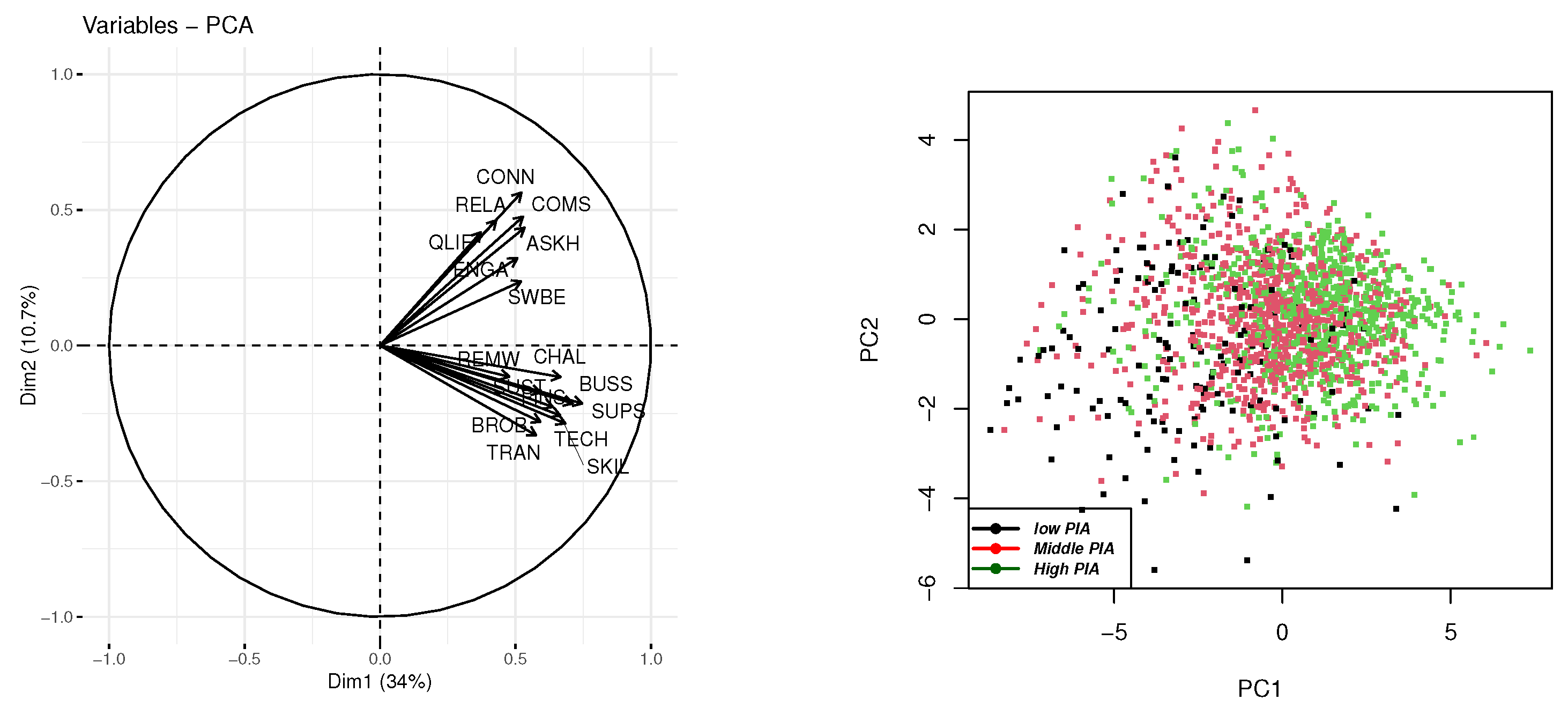
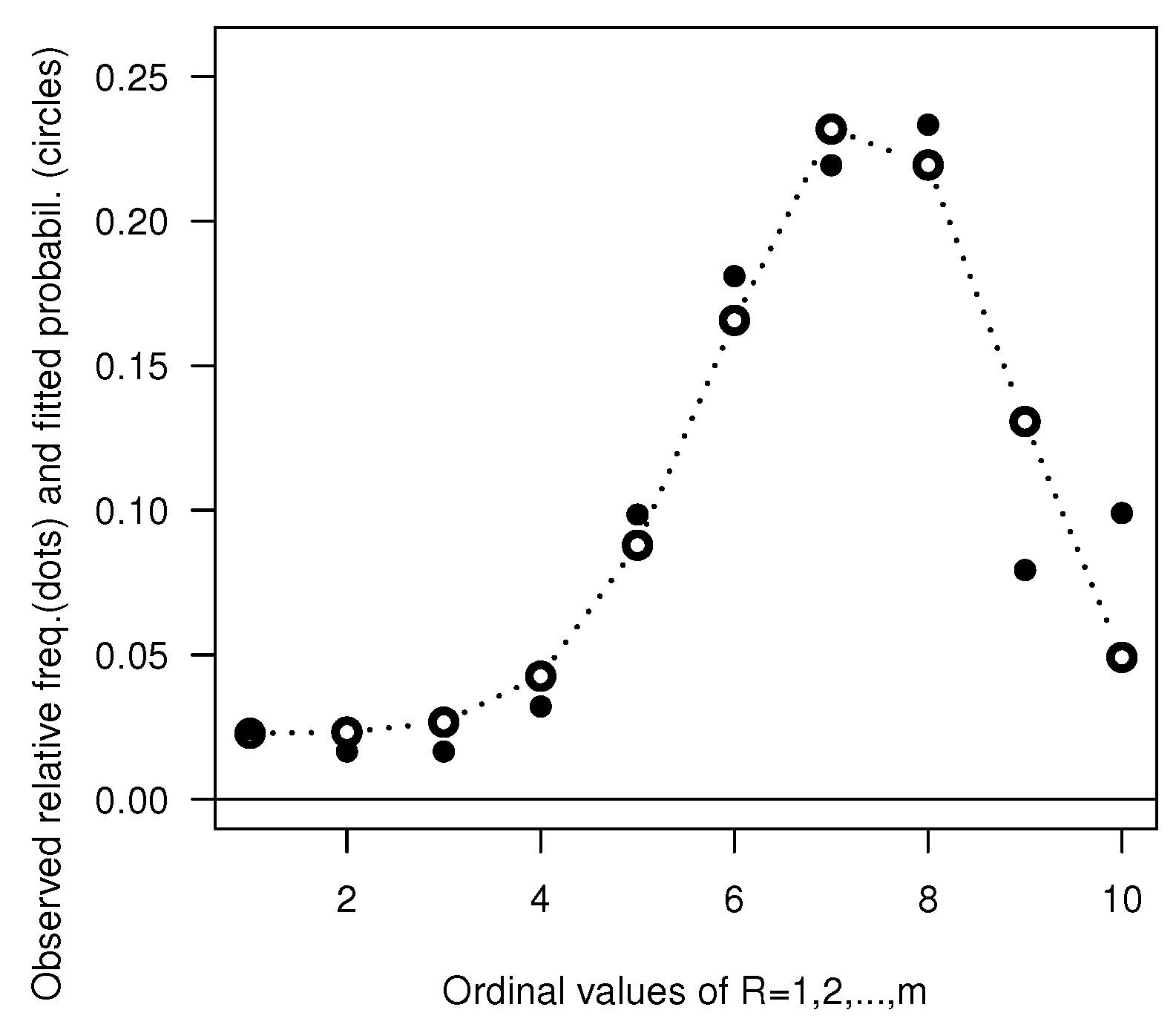

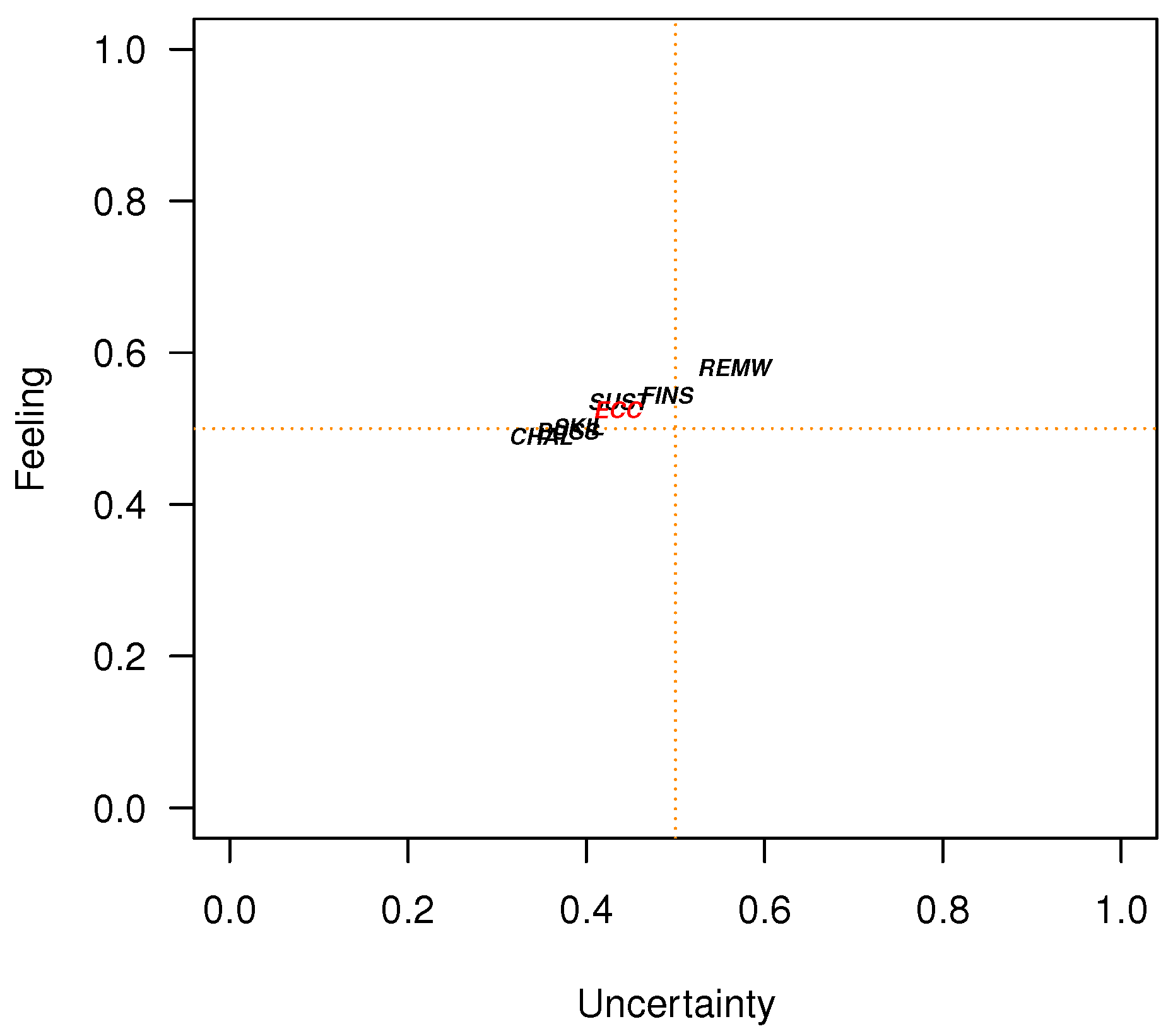
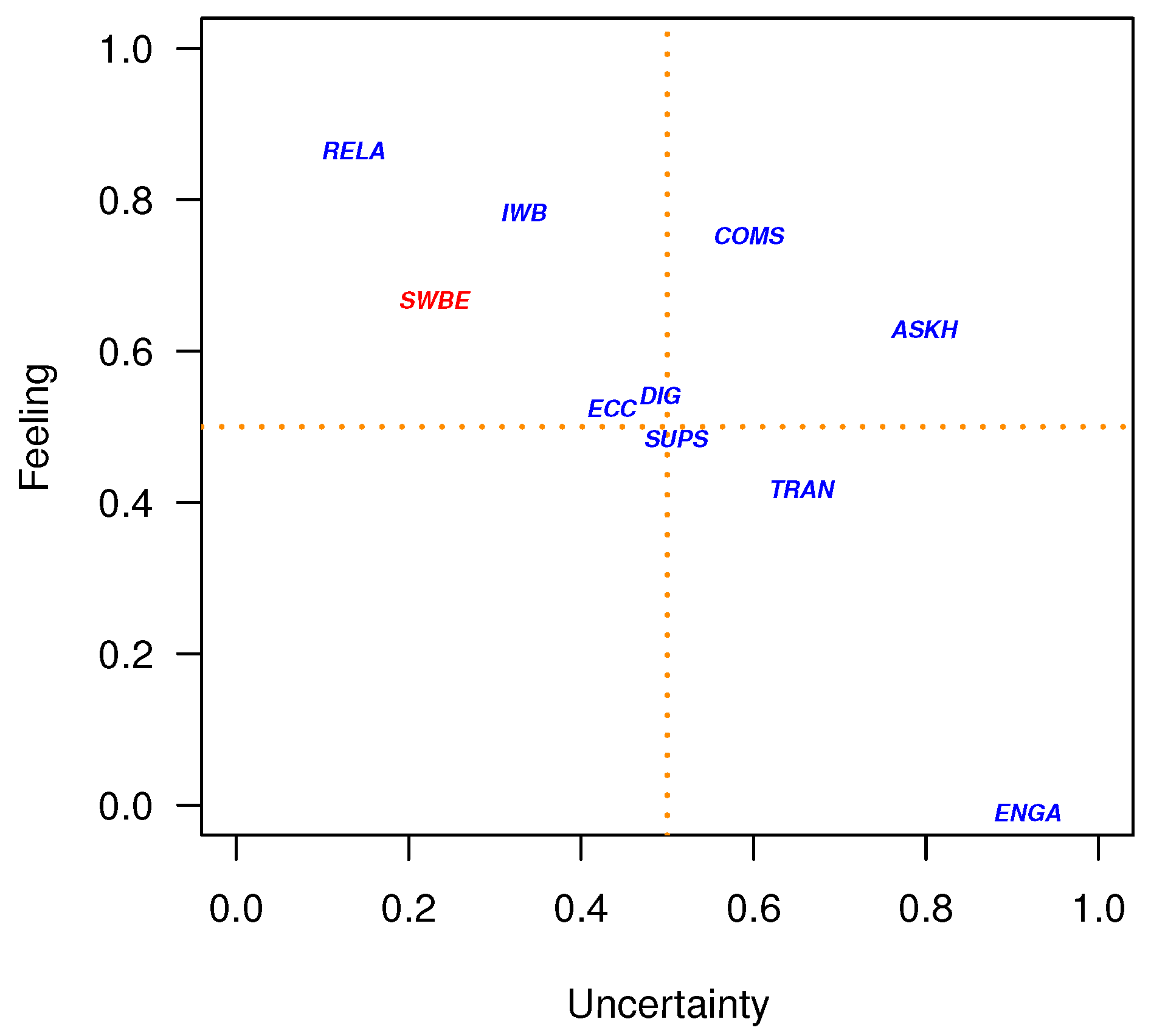
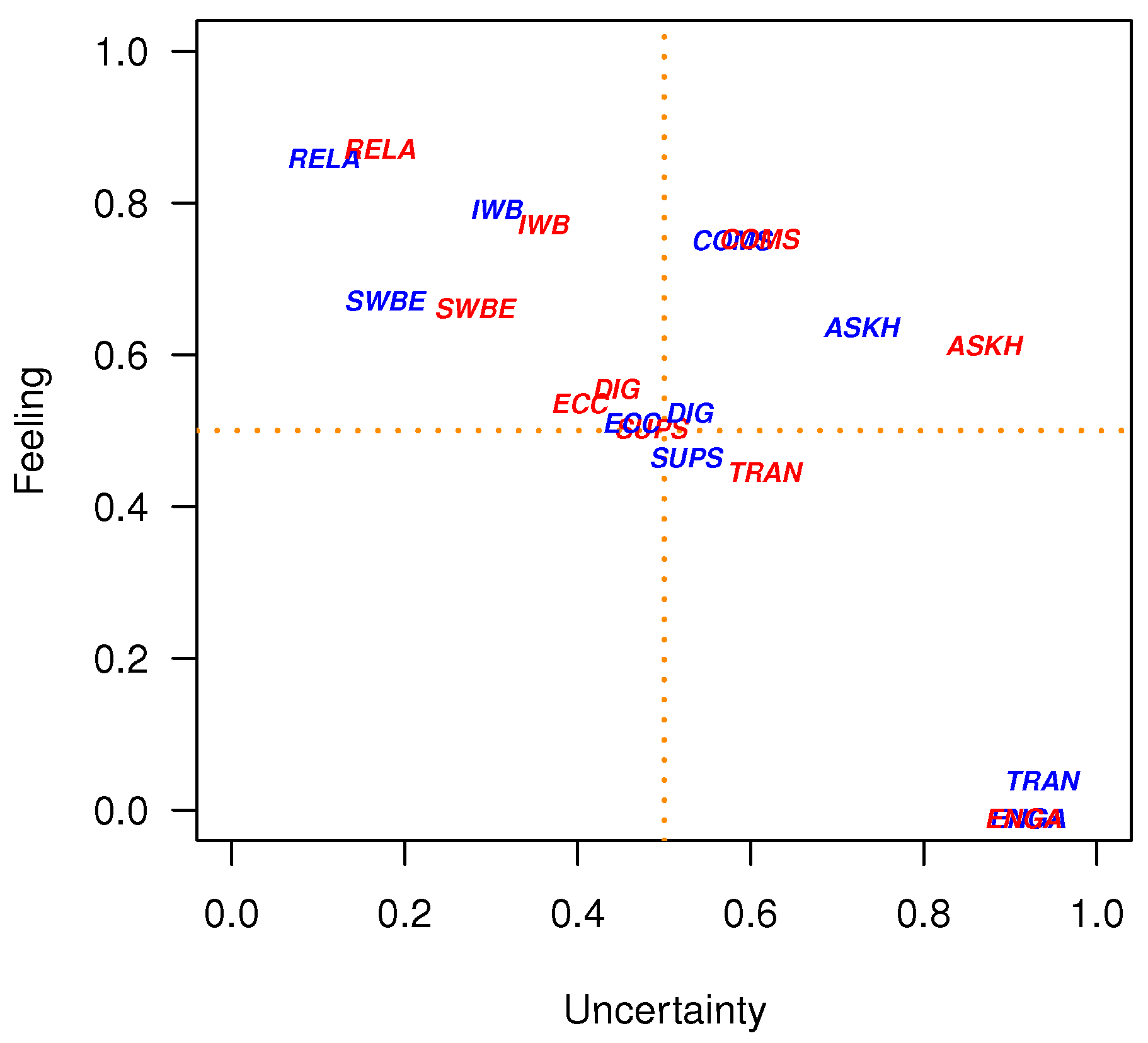

| Area | Land Area (km2) | Mean Altitude (m) | Population Density | Aging Index * | Birth Rate * |
|---|---|---|---|---|---|
| Mainarde | 321.78 | 644.37 | 37.11 | 314.89 | 5.11 |
| Sele-Tanagro | 781.83 | 502.52 | 71.29 | 161.81 | 6.68 |
| Montagna Materana | 644.66 | 698.56 | 14.69 | 383.94 | 4.88 |
| Variable | Category/Class | Percentage |
|---|---|---|
| Gender | ||
| Male | 51.0 | |
| Female | 49.0 | |
| Marital Status | ||
| Single | 33.1 | |
| Married | 54.3 | |
| Divorced/Widowed | 12.6 | |
| Age | ||
| 18–24 | 6.6 | |
| 25–65 | 71.0 | |
| 22.4 | ||
| Employment Status | ||
| Employed | 41.5 | |
| Unemployed or Not in labor force | 58.5 |
| Variable | max log-lik | |||
|---|---|---|---|---|
| SWBE | 0.771 | 0.313 | −3886.809 | 7788.747 |
| (0.018) | (0.005) |
Disclaimer/Publisher’s Note: The statements, opinions and data contained in all publications are solely those of the individual author(s) and contributor(s) and not of MDPI and/or the editor(s). MDPI and/or the editor(s) disclaim responsibility for any injury to people or property resulting from any ideas, methods, instructions or products referred to in the content. |
© 2025 by the authors. Licensee MDPI, Basel, Switzerland. This article is an open access article distributed under the terms and conditions of the Creative Commons Attribution (CC BY) license (https://creativecommons.org/licenses/by/4.0/).
Share and Cite
Capecchi, S.; Corduas, M.; Piccolo, D. Social Sustainability and Subjective Well-Being: A Study on Italian Inner Areas. Sustainability 2025, 17, 2078. https://doi.org/10.3390/su17052078
Capecchi S, Corduas M, Piccolo D. Social Sustainability and Subjective Well-Being: A Study on Italian Inner Areas. Sustainability. 2025; 17(5):2078. https://doi.org/10.3390/su17052078
Chicago/Turabian StyleCapecchi, Stefania, Marcella Corduas, and Domenico Piccolo. 2025. "Social Sustainability and Subjective Well-Being: A Study on Italian Inner Areas" Sustainability 17, no. 5: 2078. https://doi.org/10.3390/su17052078
APA StyleCapecchi, S., Corduas, M., & Piccolo, D. (2025). Social Sustainability and Subjective Well-Being: A Study on Italian Inner Areas. Sustainability, 17(5), 2078. https://doi.org/10.3390/su17052078






